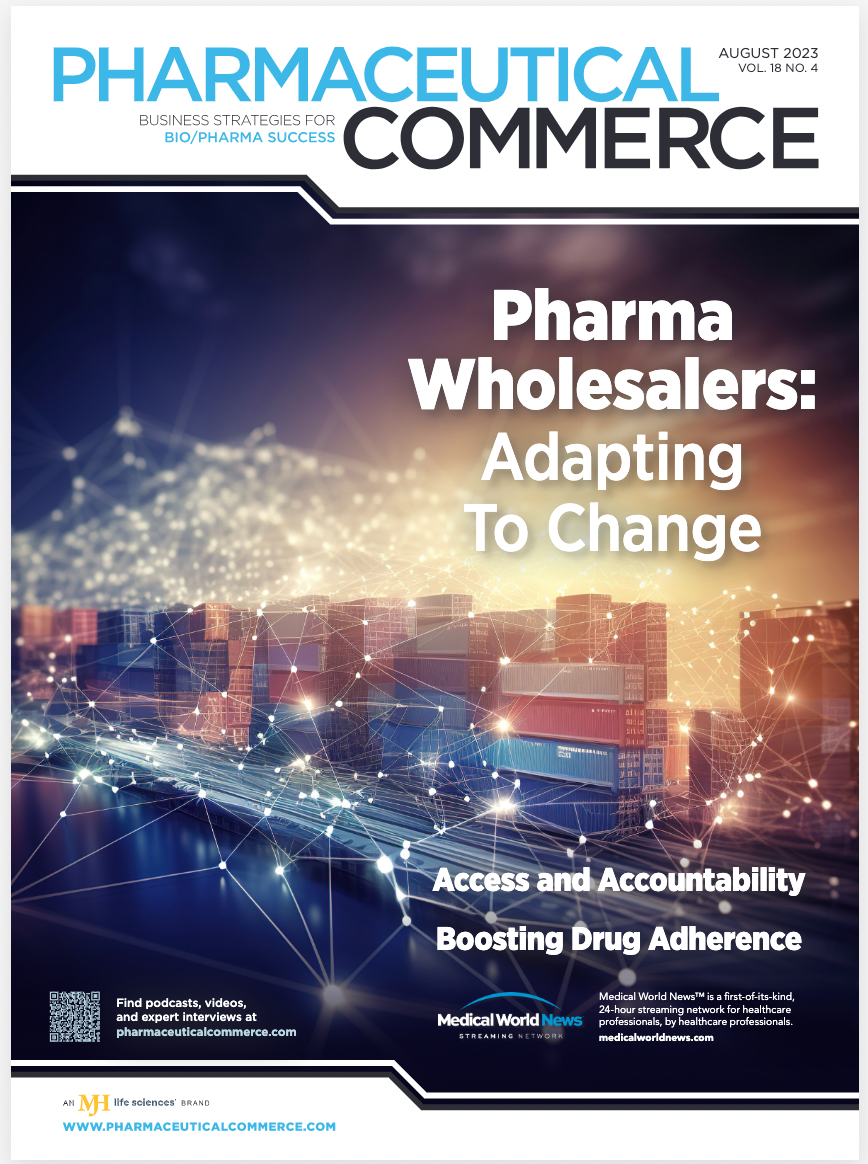Telling the 'Whole' Story
The August issue varies in subject matters, from the outlook for drug wholesaling to the value of a user-centric approach for drug adherence.

Pharmaceutical Commerce's August issue homes in on a plethora of different topics, ranging from alternate funding programs (AFPs) to the importance of prioritizing patient centricity in the pharma supply chain. However, one focal point in our latest issue surrounds pharma wholesalers and, fresh off the pandemic, a glimpse into the key business trends and challenges today for these essential distribution partners.
In his feature, Editor Emeritus Nick Basta explores the new approaches in operations, technology, and service diversification by the “Big Three” distributors in the space: AmerisourceBergen/ Cencora, Cardinal Health, and McKesson. He also reminds readers that as enormous as these wholesalers are—ranked No. 11, 14, and 9 on the 2023 Fortune 500 list, respectively—they operate on the narrowest of profit margins—less than 1%. Basta reports that a shifting R&D investment climate among drugmakers is squeezing margins all the way across the distribution chain. And in a guest piece this month, Archbow Consulting’s Rob Besse notes that "every aspect of the pharmaceutical supply chain is under tremendous pressure to lower costs and increase margins." To that end, for pharma, Besse presents the case for using an alternative distribution model to potentially meet manufacturers' financial, operational, and logistical needs without adversely affecting patient needs.
Highlighting other coverage this month is Ed Schoonveld's “Value and Access” column, where he explores the disconnect between the corporate communications message and actual internal company processes when it comes to prioritizing patients and value in drug development. Schoonveld also lays out the case for a new addition to the Big Pharma C-suite: a chief access officer. Speaking of columnists, Bill Roth of IntegriChain begins his "Fight for the Dollar" series of articles by discussing various bundle-types affected by the trendline on the demise of new-item generics, along with the impact of the inability for generic manufacturers to raise prices. For readers seeking a broader subject matter, in her “In Focus” feature, Contributing Editor Suzanne Shelley details how a user-centric approach for drug adherence, harnessing digital tools and behavioral science, can help patients and improve clinical and financial outcomes for manufacturers.
As always, thanks for reading.
— Mike Hennessy Jr., President and CEO, MJH Life Sciences

Strategic Trends in Pharmaceutical Manufacturing for Industry Leaders
March 10th 2025This link in the pharma supply chain is undergoing a major transformation propelled by technological advancements, regulatory changes, and evolving market dynamics, requiring industry leaders to adopt innovative strategies in order to remain competitive.
The Digital Transformation Reshaping Hospitals and Medication Management
January 20th 2025Despite challenges surrounding communication overload, drug shortages, and cybersecurity risks, this term is revolutionizing medication management and patient care through the use artificial intelligence and predictive forecasting.